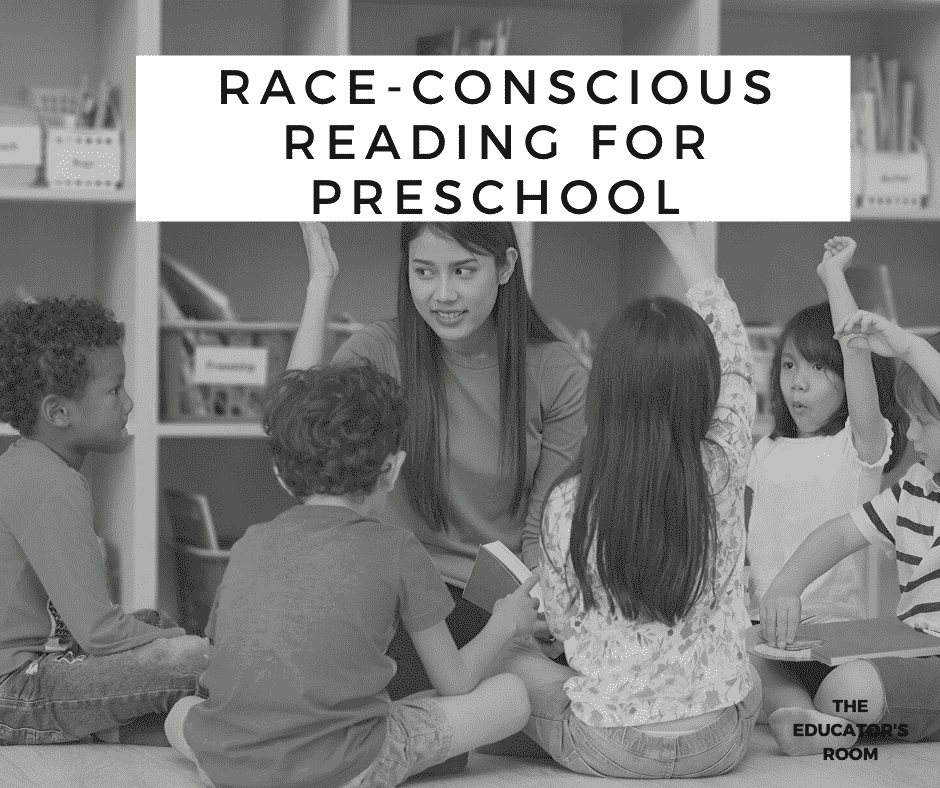Guest Writer: Marisa Lark Wallin
As a white preschool teacher and program director in a racially and culturally diverse Brooklyn preschool for many years, I encountered teachers, administrators, children and parents unpacking race and racism in myriad ways…or not dealing with it at all. Through years of experience and many workshops and educational discussions with my peers and experts in the field, I am grateful to share a very simple change every adult can make in their interactions with kids to begin to dismantle racism in our schools and homes. I do not claim to be an expert on this topic, and I am constantly striving to be more anti-racist every day—as I hope each of you reading this is.
[bctt tweet=”I am grateful to share a very simple change every adult can make in their interactions with kids to begin to dismantle racism in our schools and homes.” username=””]
It can be incredibly intimidating to broach the looming, heavy topic of race with young children. However, as adults who care for young children, it is our responsibility to do this work—because kids will encounter it, wonder about it, and make their own connections, regardless. According to Sesame Workshop researcher Tanya Haider, “What’s risky is when kids are left alone to make sense of the differences they see, with little more than stereotypes, television, and guesswork to guide them.” And discrimination doesn’t just start appearing whenever the adults in kids’ lives are ready to talk about it. According to a University of Toronto study, racial bias might appear in babies as early as six-to-nine months old.
A recent survey by Sesame Workshop found that “A majority of parents rarely, if ever, discuss race/ethnicity, gender, class or other categories of social identity with their kids.” This can be very dangerous because as we all know, little ones take all their social cues from us. If they ask a question about race and we adults become uncomfortable, ignore it or brush it off without discussion, they will get the impression that there is something wrong with talking about race…and the difference in general.
Rest assured you can do this—and trust me—the kids you work with are more than ready to talk about it. And they need it! An easy entry to having conversations about race is through something you participate in every day already—reading picture books.
• First, go through all your picture books. If you notice most of the images in your books feature white children or adults, get thee to the library! An excellent resource for finding more representative children’s books is We Need Diverse Books. Remember, your books do not all have to directly address race. Representation is what is most important. It is imperative that children not only see people who look like them represented in their libraries, it is also important that they see people who look different from them as well!
- Read the title, author, and illustrator aloud each time you read the book. This not only helps with an early understanding of book structure but also can raise questions about who is telling the stories they are reading. Is this the illustrator and/or author’s story? Are they telling the story for someone else? Who is represented here? Who gets to tell the story? These discussions might inspire children to write their own books—another literacy link!
- When you read any book, explicitly and matter-of-factly point out the skin color of each of the characters. Compare it to your own and the skin color of the children around you. “What is different? What is similar? How do you feel about that?” This can lead to conversations that might range from discussing biology and what melanin is, to color theory or color wheels.
- Pay attention to the content. Take note of exclusion and point it out: “I noticed there are only white people in this book about artists/scientists/politicians/etc. That isn’t fair or accurate. Let’s look up some other people who were not white who should be in this book.”
- Ask your child(ren) open-ended questions about the story and characters. This builds their visual literacy and critical thinking skills and can get some good conversations started. “What do you notice about the people in this picture? What do you notice about their hair/skin/clothing?” or “Why do you think they did that?”
- Emotionally react to the book. Share your feelings about the book to open up space for discussion from your child(ren). “I am sad that happened to that person, that wasn’t fair.” or “How do you think that person felt when that happened?” or “How do you feel about that?”
- Practice active listening and model fair and race-conscious language. “Yes, that girl does have curly hair. It’s different from yours. How cool that there are so many kinds of hair!” or “I see that you are noticing your skin is different from his skin in the book. Let’s hold your arm next to the picture to look closer. What do you see?”
With discussions like these in larger settings, we as teachers must be hyper-aware of who gets to speak when. Make sure Children of Color feel safe and free to share their experiences and feelings—but do not put a spotlight on them.
Please take these tips into consideration next time you read with the young children in your life—either in the classroom or at home. Even with this small change in your approach to books you are starting the very important work of dismantling racism for the next generation, one conversation at a time.**For more information, Raising Race Conscious Children and Embrace Race have incredible resources and tips.





